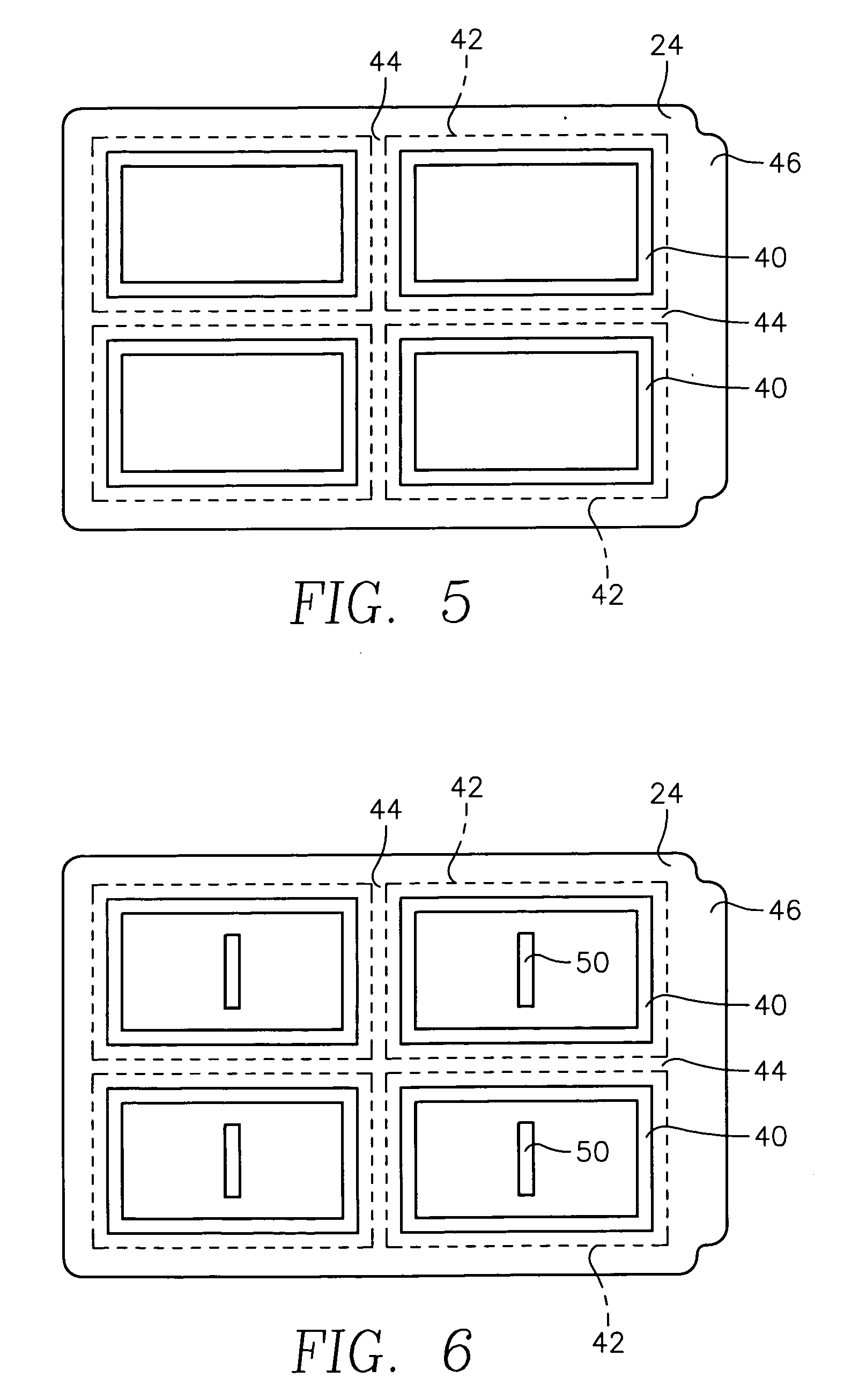Bonding of target tiles to backing plate with patterned bonding agent
a technology of target tiles and bonding agents, applied in the field of sputtering targets, can solve problems such as the difficulty of forming sputtering targets of some materials
- Summary
- Abstract
- Description
- Claims
- Application Information
AI Technical Summary
Benefits of technology
Problems solved by technology
Method used
Image
Examples
Embodiment Construction
[0021] A sputtering chamber 10, schematically illustrated in the cross-sectional view of FIG. 1, includes a vacuum chamber 12, a target 14 sealed to but isolated from the electrically grounded chamber 12, and a pedestal 16 supporting a panel 18 to be sputter coated. The target 14 includes a surface layer of the material to be sputtered onto the panel 18. An argon working gas is admitted into the chamber with a pressure in the milliTorr range. A power supply 20 electrically biases the target 14 to a negative voltage of a few hundred volts, causing the argon gas to discharge into a plasma. The positive argon ions are attracted to the negatively biased target 14 and sputter target atoms from it. A magnetron 22 is scanned along the back of the target 14 to intensify the plasma and increase the sputtering rate. Some of the target atoms strike the panel 18 and form a thin film of the target atoms on its surface. The target 14 is often somewhat larger than the panel 18 being sputter coated...
PUM
| Property | Measurement | Unit |
|---|---|---|
| depth | aaaaa | aaaaa |
| size | aaaaa | aaaaa |
| sizes | aaaaa | aaaaa |
Abstract
Description
Claims
Application Information
 Login to View More
Login to View More - R&D
- Intellectual Property
- Life Sciences
- Materials
- Tech Scout
- Unparalleled Data Quality
- Higher Quality Content
- 60% Fewer Hallucinations
Browse by: Latest US Patents, China's latest patents, Technical Efficacy Thesaurus, Application Domain, Technology Topic, Popular Technical Reports.
© 2025 PatSnap. All rights reserved.Legal|Privacy policy|Modern Slavery Act Transparency Statement|Sitemap|About US| Contact US: help@patsnap.com



